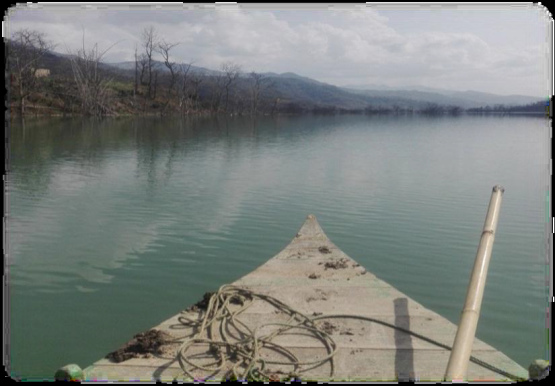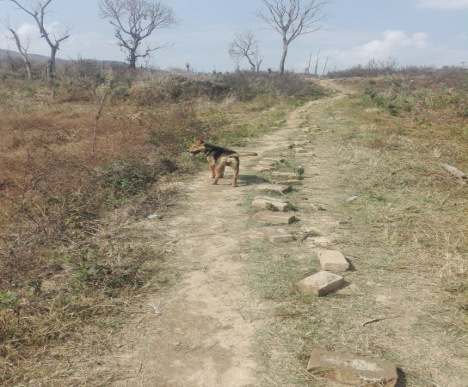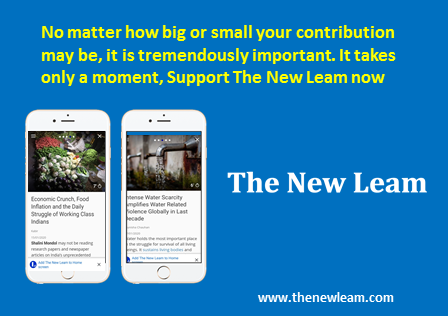The essay engages sociological imagination in understanding aspects of social suffering to deepen human consciousness on the multitude of human sufferings. Using sociological academic legitimacy, the essay argues, there is a special responsibility for sociology to create an enlightened public discourse in addressing social suffering by bringing social justice into focus as the disciplinary genesis of sociology is committed to social justice ideals.
In contemporary times, most experiences of social suffering by vulnerable groups across the globe result from what political, economic, and institutional power does to people and reciprocally, from how these forms of power themselves influence responses to social problems experienced by the same people (Kleinman, Das and Lok, 1997). In this essay, I imply social suffering as the uprooting of defenseless people from a multitude of capital—economic, social and cultural due to mega dam construction. Mega dam projects powerfully structure the life trajectories of people to becoming from a state of being abundance to the deprived and poor. As a student of sociology, I wish to recall that, the idea of social justice, irrespective of its multiple interpretations, can be usefully understood when it deals with how members of society should be treated that is believed to be fair and generate social-economic goods for all (John Rawls, 1972). In his discourse of social justice, one important consideration Rawls actively engages is his scheme of liberties, and property ownership, that the most vulnerable disadvantaged groups in any given society must have the right to own and control the means of production and natural resources; and inequalities in society are acceptable only if they leave all people better off.
Primarily driven by parochial justice for a select few, public policy of mega dam construction has created some of the worst instances of social sufferings across the globe by uprooting people from their natural resources, habitation and destruction of what the German sociologist, Ferdinand Tonnies termed as ‘community living’ or Gemeinschaft. These are mainly small hinterland communities who depend their livelihoods on renewable resources from the natural world—water, land, agriculture, forest, animals, plant life, among others. When these resources are systematically destroyed, it poses the danger of their complete annihilation from their pristine world, while destroying local natural environments. The ghostly spectre of the infamous lost villages of Canada, disappearance of Colorado’s downstream fishing community of USA, famine and pauperization of Zambian community, displacement of about 250,000 people by the Sarvar Sarovar dam construction in India, the massacre of the indigenous population in Guatemala by Chixoy dam construction by the World Bank, mass killing due to over flooding of China’s Banqiao dam construction, and burial of 80,000 people alive in China due to earthquake triggered by the construction of Zipngpu dam, are some of the worst human sufferings brought by mega dam construction. These human trajectories are a consequence of onslaught of a modern globalized era where national and transnational corporations operate their markets irrespective of territorial boundaries, with its devastating consequences on regional environments, local economies, cultures and community life aspirations.
Social suffering: Mapithel dam construction in Northeast, Manipur
The construction of the famous Multipurpose, Mapithel mega dam project began in Manipur in 1980s by the department of Irrigation and Flood Control, Government of Manipur in the Mapithel area of the former Mountainous Ukhrul district in Manipur. The purpose of the dam was to impound gross water storage of 176.38 million cusecs for drinking purpose, and electricity generation for the Imphal valley population by harnessing water from Yangwui King River, originating in the western slopes of the famous Siroi Hill and Hoomi inhabited by the Tanghkul Naga tribes. The river flows through the Thoubal valley district, and later joins the Imphal river at the capital of Manipur. Construction of the dam took place amidst heavy protest from the local population as it severely affected nearby villages and their pristine life world. Relentless protest struggles by the locals caught the attention of global community including the UN special rapporteur (Housing & Land Rights) who visited the affected victims and questioned the state failure in respecting the fundamental rights of indigenous people. Of all the affected villagers, the tribes of Chadong village have been hit very hard. Chadong is a mountainous, thinly populated island housed by 200 homes with a population of about 1027 people.
Through the constant glimpses of popular media highlight, one could capture only visible forms of social suffering of the community. So, for a closer grasp of the routinized invisible suffering of raw memory of the victims, I with a team of researchers visited the Chadong village in the Spring of 2020. The only possible shortest route to reach the Chadong island is to cross a deep watery expanding mass through a boat manned by an amateur, who was not regularly present at the shore. Soon after we reached the foothill near the shore to set off our journey for the island, we could spot an island on the other end with no sign of human habitation, while no boat was in sight. Leave alone reaching the island! Initially, we lost hope as we were stranded. Yet even in the midst of despair, we were enthralled by the spectacle of scenic beauty—lush green terrace fields, expanding meadows of colorful wild flowers, tall beautiful trees standing in silence, deep blue water sparkling with its tender waves, sounds of chirping birds, green hillocks merging with the white clouds. After a while, a village tribe man helped us in arranging a boat with the amateur who took us to the other shore. To our surprise, as our boat approached the shore, a friendly dog was seen eagerly waiting to lead us reroute to the tribal chief’s residence, which is about 2 kms away from the shore. As we tracked to the hill top, the journey was an uphill task as the terrain is rugged and hilly.


Kinship is the fundamental unit of the social structure of Chadong village, while the chief administers village affairs such as social-cultural and political organisation. Since time immemorial, the Chadong community is awash with rich natural resources and led a life of abundance. Each individual has a stake in village resources as there is collective ownership on community resources. The community enjoyed constant reaffirming existential ties with their immediate natural environment that are collectively owned—hilly abode, forest, fauna-flora, agricultural land, church life—all playing a pivotal role for their life—a life world whose social-economic and cultural activities are interwoven with the observation of seasonal community rituals. Locked in this landscape is a vast memory of past events and cultural significance of the communal life, or conscience collective as in the words of French sociologist, Emile Durkheim. The individual is inseparable from this social fact of collective life. Alongside totemic worship, there also exists an active Church life, which binds the community members together. Observing Sunday rituals and group socialization accompanied with celebration of seasonal festivals form a vital part of their existence. It’s these ceremonies and rituals that take the villagers to the elevated, sacred space and connect them with higher forcers as the divine influences strongly manifests in them. For the community, their sacred ecology— the sweetness and light as in the words of the famous poet, Mathew Arnold to convey, the social charm and reasoned life of the local populace, is capable of evoking with tremendous emancipatory force and vitality for their exuberant existence.
Longing & resistance
Mapithel dam construction brought abrupt disruption and catastrophe to the people of Chadong village. As the rising water from the dam engulfed their homes, life stocks, paddy fields, grazing grounds, school building, church, community halls, cemeteries, the community became divided into two groups preferring to move to two different directions—one occupying the western island and the other occupying the eastern island. In spite of the enormous challenges ahead, about 500 people occupying the eastern part of the island decided to stay back in their ancestral abode and refused to relocate. Amidst fears and doubts of an uncertain future, they moved up to the elevated hilltop as their longing in staying in their original habitat was deep rooted, while the tribes occupying the western hillock left their ancestral land, and settled in the western side and became relatively integrated into the mainstream valley population.

 Village church submerged under dam water Villagers attempting to rebuild their life
Village church submerged under dam water Villagers attempting to rebuild their life
The inhabitants of the eastern hillock are cut off by the deep water mass and remain inaccessible. Suffering is shared across all households of different income groups including the desperately poor families. The construction of the dam brought structural collapse of their aged old social structure. When the church that was built through collective hard work and toil, stood for years symbolizing the spirit of a community, sank into the dam water, it destroyed the social fabric of a communal life. The last Sunday congregation at Chadong Baptist Church as they narrated was held in July 2015. It is during this gathering the villagers sang mournfully, cried and observed mass fasting prayer to renew their strength in rebuilding their lives. The dam construction destroyed 1,215 hectares of land and 595 hectares of forest ecosystem, and intensified their sufferings by uprooting them from traditional livelihood i.e. paddy cultivation, the only source of their food security as their economic activity is characterized mainly by what is called as productive consumption in Marxian language. What’s more, the community is constantly traumatized by inexplicable hardships of inner pain, psychological trauma, angst and despair. According to the UN’s Food and Agriculture Organization (FAO) and the United States Department of Agriculture (USDA), food security for a household means access by all members at all times to enough food for an active, healthy life. Food security also means the ready availability of nutritionally adequate and safe foods, and an assured ability to acquire acceptable foods in socially acceptable ways (that is, without resorting to emergency food supplies, scavenging, stealing, or other coping strategies). Food insecurity can be categorized as either chronic or transitory. Considering the current situation, the food scarcity of the Chadong village is of transitory nature. Hence, timely intervention can prevent collective hunger and starvation by exploiting local potential resources including its biodiversity and rich horticultural plants, fruits, medicinal herbs of a vast variety without compromising the ability of the collective future generations to meet their future needs and community aspirations. Social sufferings of defenseless communities are dealt with bureaucratic indifference and state apathy; creating more obstacles to their alleviation by alienating the sufferers, while the process has the power to create a highly fractured society among different ethnic groups of mistrust and hatred. Overtime social sufferings become invisible which can be reinforced; rendering the sufferers completely dehumanized. Indeed, we are at this critical moment of time of foregrounding social justice issues with the attendant debates and discourses by rediscovering the genesis of sociology committed to social justice as the famous American sociologist, C. W. Mills reminds us, “personal troubles of milieu” as “public issues of social structure” that necessitates public action to resolve.
Dr. Jeebanlata Salam teaches at the National Institute of Advanced Studies, IISc, Bengaluru.


